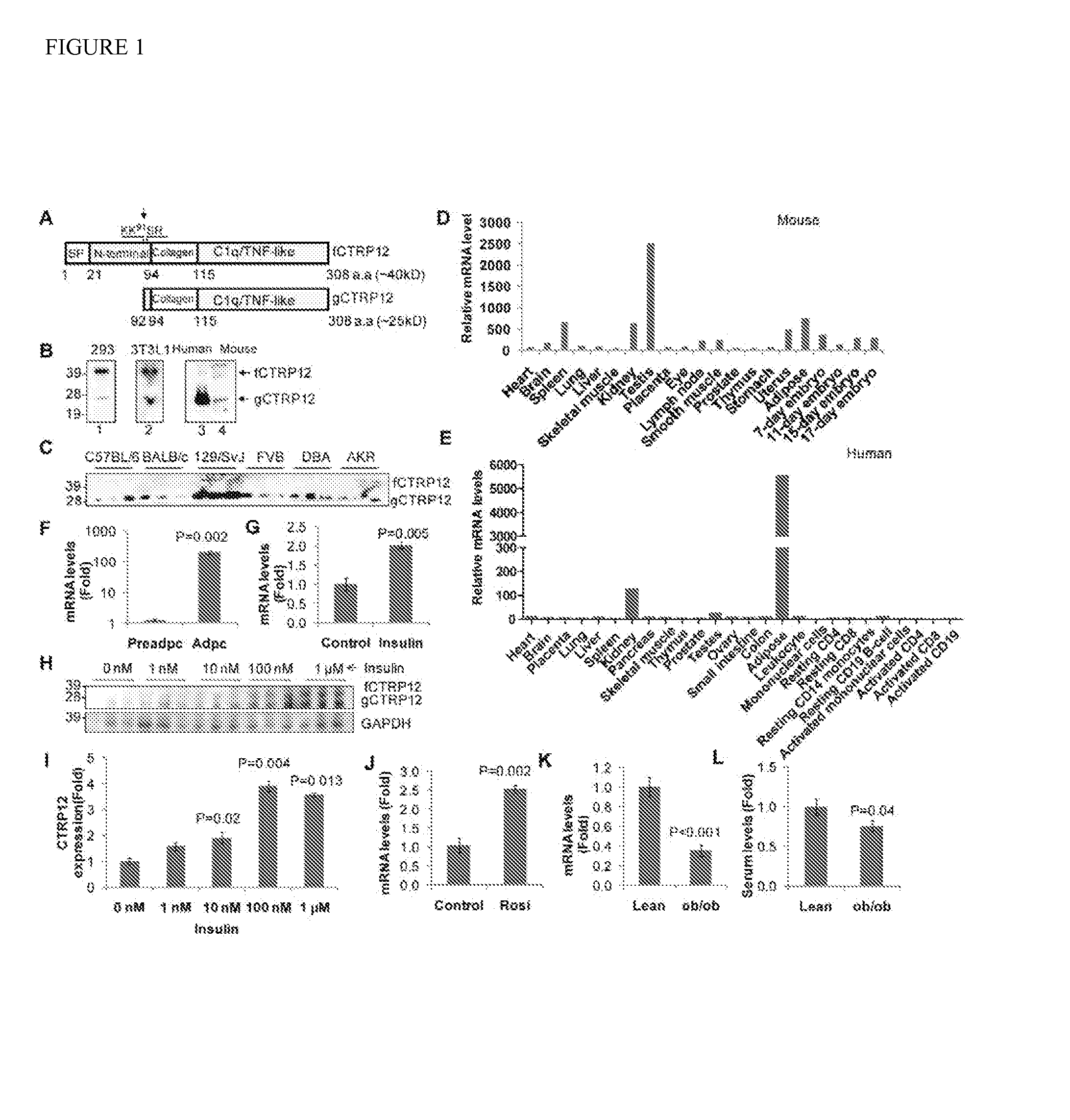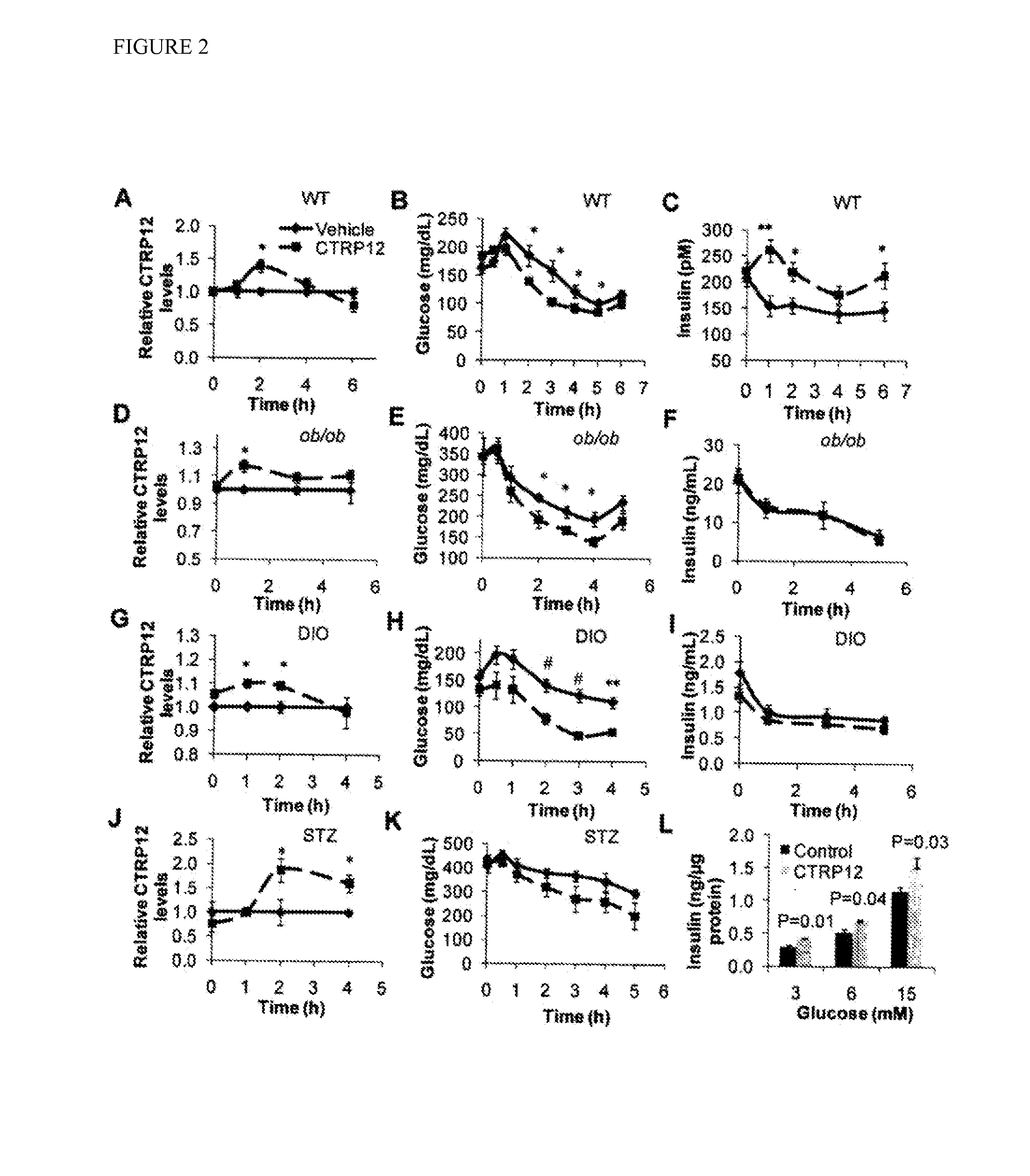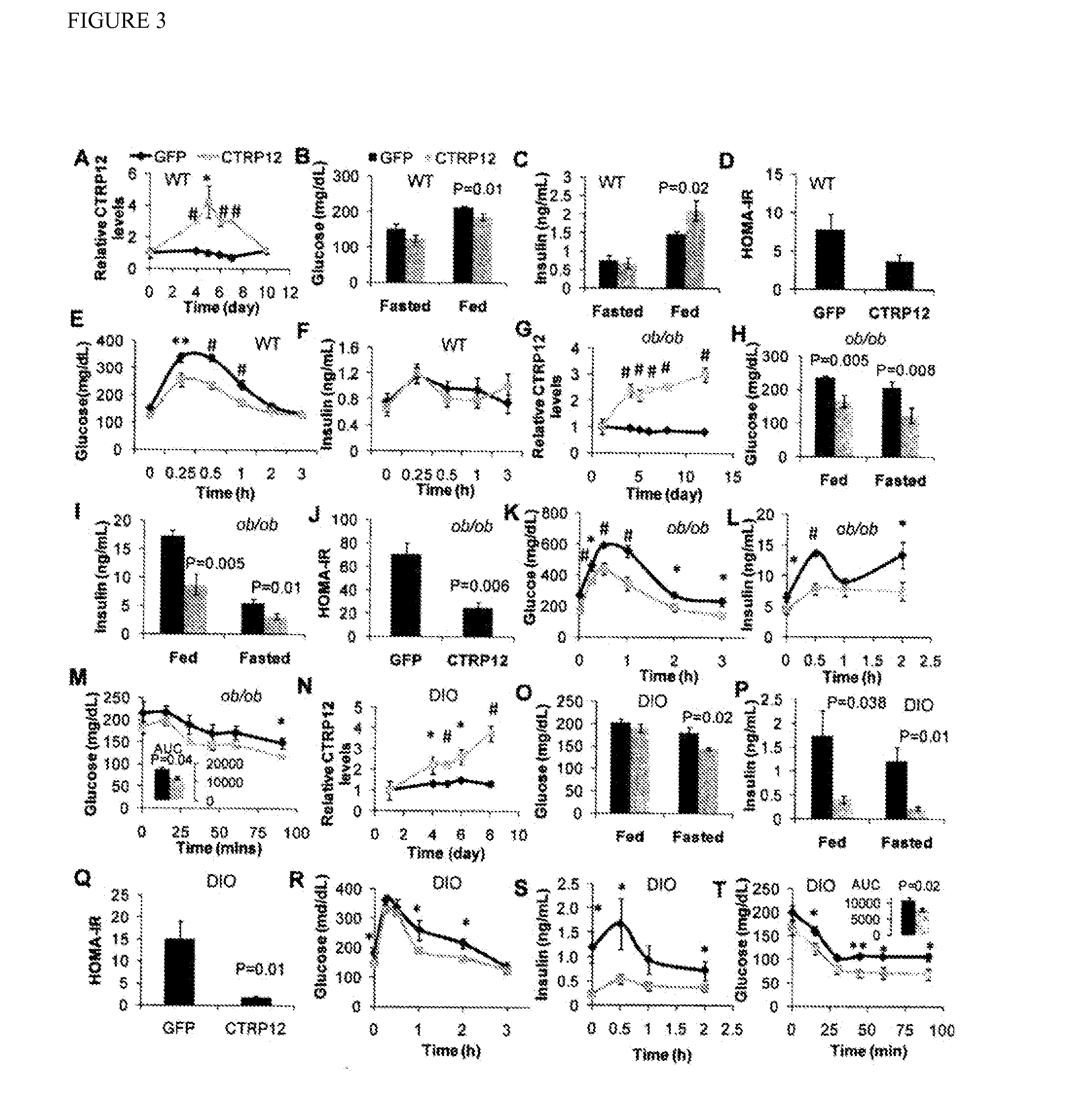C1q/tnf-related protein 12 and compositions and methods of using same
- Summary
- Abstract
- Description
- Claims
- Application Information
AI Technical Summary
Benefits of technology
Problems solved by technology
Method used
Image
Examples
example 1
[0142]Identification of CTRP12 as an adipokine. Mouse CTRP12 (GenBank: AAY21936.1; SEQ ID NO:2) was identified in silico as possessing a globular Clq / TNF-like domain, the signature domain of CTRPs. Limited sequence similarity to other CTRPs, including adiponectin (21% identity) and Clq (˜20% identity), make it a distantly-related member. CTRP12 is evolutionarily conserved (FIG. 9 and Table 1) and has four basic domains (FIG. 1A). CTRP12 has a protease cleavage motif, 90-KKSR-93, with the cleavage site mapped to Lys-91 by N-terminal sequencing (FIG. 1A, arrow). Recombinant CTRP12 secreted from transfected HEK 293 cells (FIG. 1B, lane 1), endogenous CTRP12 secreted from 3T3-L1 adipocytes (FIG. 1B, lane 2), and circulating CTRP12 in human and mouse sera all contain both the full-length fCTRP12 and the cleaved globular gCTRP12 (FIG. 1B, lanes 3 and 4, respectively). In circulating mouse and human sera, gCTRP12 is the predominant form (FIG. 1B, lane 3, 4; FIG. 1C). Circulating levels of ...
example 2
[0144]CTRP12 decreases blood glucose in mice. To determine the metabolic functions regulated by CTRP12, recombinant CTRP12 was administered to wild-type C57BL / 6 mice and examined chCTRP12es in glucose dynamics. Secreted recombinant CTRP12 containing both fCTRP12 and gCTRP12 was affinity-purified from the supernatant of transfected HEK 293 cells (FIG. 11). Intraperitoneal (i.p.) injection of CTRP12 at a dose of 3.5 μg / g body weight into wild-type mice resulted in an acute 40% increase in serum CTRP12 over the physiological level (FIG. 2A).
[0145]Concomitantly, there was a significant lowering in blood glucose with a maximum 40% decrease in CTRP12-treated wild-type mice (FIG. 2B). Surprisingly, there was a maximum 70% increase in serum insulin after CTRP12 administration (FIG. 2C). The rise in insulin appeared to be biphasic (FIG. 2C), reminiscent of the biphasic kinetics of glucose-stimulated insulin secretion, despite temporal differences. This biphasic rise in insulin suggests that ...
example 3
[0148]CTRP12 enhances insulin sensitivity in mice. The metabolic consequences of short-term ectopic expression of CTRP12 in mice using adenoviral vectors was investigated. Adenoviral-mediated expression of CTRP12 did not result in body weight chCTRP12es compared to GFP-expressing mice over the course of the experiment (FIG. 13). In wild-type C57BL / 6 mice, expression of CTRP12 caused a maximum 3-fold elevation of serum CTRP12 levels (FIG. 3A). Blood glucose levels were 20 mg / dl lower in the fed state in CTRP12-expressing mice (FIG. 3B) but were not significantly different in the fasted state. Serum insulin levels in these mice were ˜45% higher in the fed state (FIG. 3C), but were not different in the fasted state (FIG. 3C). The fasted and fed glucagon levels were not different between the two groups (FIG. 14).
[0149]Assessment of whole-body insulin sensitivity using the homeostatic model assessment insulin resistance index (HOMA-IR) revealed a trend toward a decreased insulin resistan...
PUM
| Property | Measurement | Unit |
|---|---|---|
| Fraction | aaaaa | aaaaa |
| Fraction | aaaaa | aaaaa |
| Fraction | aaaaa | aaaaa |
Abstract
Description
Claims
Application Information
 Login to view more
Login to view more - R&D Engineer
- R&D Manager
- IP Professional
- Industry Leading Data Capabilities
- Powerful AI technology
- Patent DNA Extraction
Browse by: Latest US Patents, China's latest patents, Technical Efficacy Thesaurus, Application Domain, Technology Topic.
© 2024 PatSnap. All rights reserved.Legal|Privacy policy|Modern Slavery Act Transparency Statement|Sitemap



